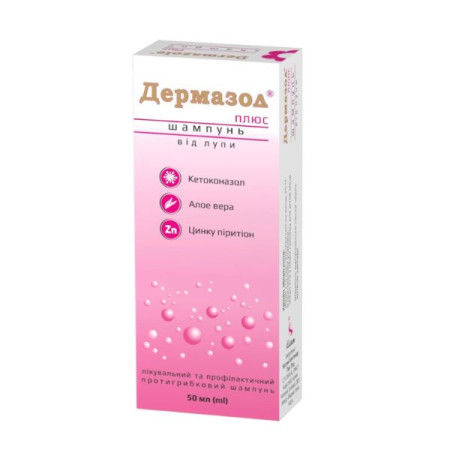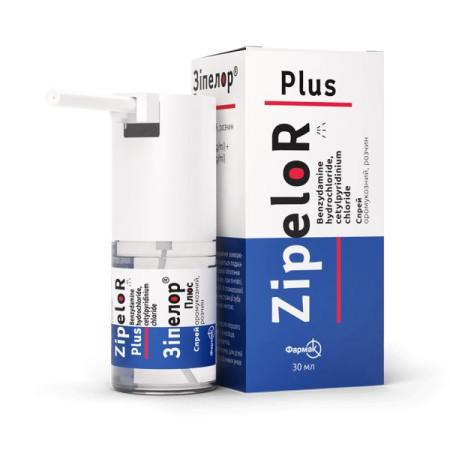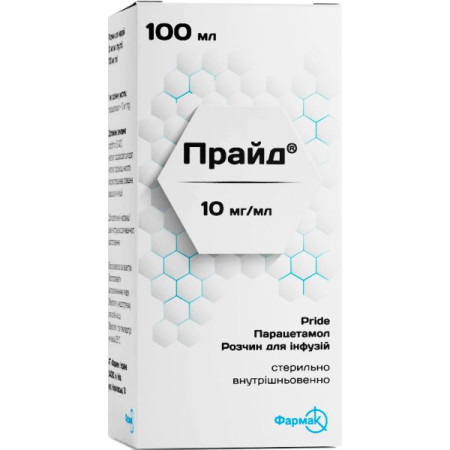Solpadeine Active effervescent tablets strip No. 12

Instructions for Solpadeine Active effervescent tablets strip No. 12
Composition
active ingredients: paracetamol, caffeine;
1 tablet contains 500 mg of paracetamol, 65 mg of caffeine;
other ingredients: sorbitol (E 420), sodium saccharin, sodium bicarbonate, povidone, sodium lauryl sulfate, dimethicone, anhydrous citric acid, anhydrous sodium carbonate.
Dosage form
Effervescent tablets.
Main physicochemical properties: flat white tablets with beveled edges, smooth on one side and with a break line on the other.
Pharmacotherapeutic group
Analgesics and antipyretics. ATX code N02B E51.
Pharmacological properties
Pharmacodynamics
Paracetamol is an analgesic-antipyretic. The effect is based on the inhibition of prostaglandin synthesis in the central nervous system (CNS). Caffeine increases the effectiveness of analgesia due to its excitatory effect on the CNS, which can eliminate the depression that often accompanies pain.
Pharmacokinetics
Paracetamol is rapidly and almost completely absorbed from the gastrointestinal tract. It is evenly distributed throughout all body fluids. Binding to plasma proteins is variable. It is excreted mainly by the kidneys in the form of conjugated metabolites.
After oral administration, caffeine is rapidly absorbed. Peak plasma concentrations are reached within 1 hour, with a half-life of approximately 3.5 hours. 65-80% of caffeine is excreted in the urine in the form of 1-methyluric acid and 1-methylxanthine.
Indication
Moderate to severe pain (headache, migraine, musculoskeletal pain, muscle pain, toothache, pain after tooth extraction and dental procedures, sore throat, periodic pain during menstruation), fever and pain after vaccination; elevated body temperature.
Contraindication
Hypersensitivity to paracetamol, caffeine or any other component of the drug in history; severe liver and/or kidney disorders; congenital hyperbilirubinemia; glucose-6-phosphate dehydrogenase deficiency; alcoholism; blood diseases, severe anemia, leukopenia; states of increased excitement, sleep disorders, epilepsy; severe increased blood pressure, organic diseases of the cardiovascular system, including severe atherosclerosis, severe hypertension; decompensated heart failure, acute myocardial infarction, paroxysmal tachycardia, hyperthyroidism, acute pancreatitis, severe forms of diabetes mellitus, glaucoma; age over 60 years.
Do not use with monoamine oxidase inhibitors (MAOIs) and within 2 weeks of discontinuing MAOIs.
Contraindicated in patients taking tricyclic antidepressants or beta-blockers.
Interaction with other medicinal products and other types of interactions
The rate of absorption of paracetamol may increase with metoclopramide and domperidone and decrease with cholestyramine. The anticoagulant effect of warfarin and other coumarins with an increased risk of bleeding may be enhanced by long-term regular use of paracetamol. Single doses do not have a significant effect. Barbiturates reduce the antipyretic effect of paracetamol. Anticonvulsants (including phenytoin, barbiturates, carbamazepine), which stimulate the activity of liver microsomal enzymes, may enhance the toxic effect of paracetamol on the liver due to an increase in the degree of conversion of the drug to hepatotoxic metabolites. With simultaneous use of paracetamol with hepatotoxic drugs, the toxic effect of drugs on the liver increases. Simultaneous use of high doses of paracetamol with isoniazid increases the risk of developing hepatotoxic syndrome. Paracetamol reduces the effectiveness of diuretics.
Do not use simultaneously with alcohol.
Simultaneous use of caffeine with MAO inhibitors can cause a dangerous increase in blood pressure. Caffeine enhances the effect (improves bioavailability) of analgesics-antipyretics, potentiates the effects of xanthine derivatives, alpha- and beta-adrenomimetics, and psychostimulants.
Cimetidine, hormonal contraceptives, and isoniazid enhance the effects of caffeine.
Caffeine reduces the effect of opioid analgesics, anxiolytics, hypnotics and sedatives, is an antagonist of anesthesia and other drugs that depress the central nervous system, a competitive antagonist of adenosine drugs, ATP. With simultaneous use of caffeine with ergotamine, the absorption of ergotamine from the digestive tract improves, with thyroid-stimulating drugs - the thyroid effect increases. Caffeine reduces the concentration of lithium in the blood.
Application features
Before using the drug, you should consult a doctor if you are using warfarin or similar drugs that have an anticoagulant effect. It should be borne in mind that patients with alcoholic non-cirrhotic liver damage are at increased risk of hepatotoxic effects of paracetamol; the drug may affect the results of laboratory tests for blood glucose and uric acid. Patients who take analgesics daily for mild arthritis should consult a doctor. Patients with severe infections, such as sepsis, accompanied by a decrease in glutathione levels, are at increased risk of metabolic acidosis when taking paracetamol. Symptoms of metabolic acidosis include deep, rapid or difficult breathing, nausea, vomiting, loss of appetite. You should immediately consult a doctor if these symptoms appear.
During treatment, it is not recommended to consume excessive amounts of beverages containing caffeine (such as coffee, tea). This may lead to sleep problems, tremors, and an unpleasant feeling behind the sternum due to palpitations.
Do not exceed the indicated doses.
Do not take the drug with other products containing paracetamol.
If symptoms persist, you should consult a doctor.
If the headache becomes persistent, you should see a doctor.
1 tablet contains 427 mg sodium. This should be taken into account by patients on a controlled sodium diet. Patients with rare hereditary forms of fructose intolerance should not take this medicine. The medicine contains sorbitol 50 mg/tablet.
Keep the drug out of the sight and reach of children.
Ability to influence reaction speed when driving vehicles or other mechanisms
If dizziness occurs during treatment with the drug, you should refrain from driving vehicles or operating other mechanisms.
Use during pregnancy or breastfeeding
It is not recommended for use during pregnancy as the risk of spontaneous miscarriage associated with caffeine is increased.
Paracetamol and caffeine are excreted in breast milk. Use during breast-feeding is not recommended. Caffeine may have a stimulating effect on breast-fed infants, but no significant toxicity has been observed.
Method of administration and doses
The drug is intended for oral administration.
Adults, the elderly and children over 12 years of age: 1-2 tablets 4 times a day. The tablet should be dissolved in half a glass of water. The interval between doses should be at least 4 hours. Do not take more than 8 tablets (4000/520 mg, paracetamol/caffeine) within 24 hours.
Do not exceed the recommended dose.
Do not take with other medicines containing paracetamol.
Children
Not recommended for use in children under 12 years of age.
Overdose
Liver damage is possible in adults who have taken 10 g or more of paracetamol and in children who have taken more than 150 mg/kg of body weight. In patients with risk factors (long-term treatment with carbamazepine, phenobarbitone, phenytoin, primidone, rifampicin, St. John's wort or other drugs that induce liver enzymes; regular use of excessive amounts of ethanol; glutathione cachexia, etc.), taking 5 g or more of paracetamol may lead to liver damage.
Symptoms of overdose in the first 24 hours: pallor, nausea, vomiting, appetite and abdominal pain. Liver damage may become apparent 12-48 hours after overdose. Glucose metabolism disorders and metabolic acidosis occur. In severe poisoning, liver failure may progress to encephalopathy, hemorrhage, hypoglycemia, coma and death. Acute renal failure with acute tubular necrosis may manifest as severe lumbar pain, hematuria, proteinuria and develop even in the absence of severe liver damage. Cardiac arrhythmia and pancreatitis have also been reported.
In case of overdose, urgent medical attention is required. The patient should be taken to hospital immediately, even if there are no early symptoms of overdose. Symptoms may be limited to nausea and vomiting or may not reflect the severity of the overdose or the risk of organ damage. Treatment with activated charcoal should be considered if an overdose of paracetamol has been taken within 1 hour. The concentration of paracetamol in the blood plasma should be measured 4 hours or later after ingestion (earlier concentrations are unreliable). Treatment with N-acetylcysteine can be used within 24 hours of paracetamol ingestion, but the maximum protective effect occurs when it is used within 8 hours of ingestion. The effectiveness of the antidote decreases sharply after this time. If necessary, the patient should be given N-acetylcysteine intravenously according to the recommended dosage. In the absence of vomiting, oral methionine can be used as a suitable alternative in remote areas outside the hospital.
Large doses of caffeine can cause epigastric pain, vomiting, diuresis, rapid breathing, extrasystole, tachycardia or cardiac arrhythmia, and affect the central nervous system (dizziness, insomnia, nervous excitement, irritability, affective state, anxiety). Clinically important symptoms of caffeine overdose are also associated with liver damage by paracetamol. There is no specific antidote, but supportive measures, such as the use of beta-adrenergic antagonists, can alleviate the cardiotoxic effect. Gastric lavage is necessary, oxygen therapy is recommended, and diazepam is recommended for convulsions. Symptomatic therapy.
Symptoms of sodium bicarbonate overdose. High doses of sodium bicarbonate can cause gastrointestinal disorders such as belching and nausea, and can also cause hypernatremia, so it is necessary to monitor electrolyte balance and provide patients with appropriate treatment.
Adverse reactions
On the part of the immune system: anaphylaxis, hypersensitivity reactions, including rashes on the skin and mucous membranes (usually generalized rash, erythematous, urticaria), Stevens-Johnson syndrome, skin itching, angioedema, exudative erythema multiforme);
from the digestive system: nausea, vomiting, heartburn, epigastric pain;
from the endocrine system: hypoglycemia, up to hypoglycemic coma;
from the blood and lymphatic system: thrombocytopenia, agranulocytosis, anemia, sulfhemoglobinemia and methemoglobinemia (cyanosis, shortness of breath, heart pain), hemolytic anemia, bruises or hematomas;
from the cardiovascular system: tachycardia, arrhythmia, increased blood pressure, rapid heartbeat;
from the side of the central nervous system: insomnia, anxiety, dizziness;
Respiratory system: bronchospasm in patients sensitive to acetylsalicylic acid or other nonsteroidal anti-inflammatory drugs;
On the part of the hepatobiliary system: impaired liver function, increased activity of liver enzymes, usually without the development of jaundice, hepatonecrosis (dose-dependent effect).
Taking the drug at recommended doses with products containing caffeine may increase caffeine-induced side effects, such as dizziness, increased excitability, insomnia, restlessness, anxiety, irritability, headache, gastrointestinal disturbances, and rapid heartbeat.
Expiration date
4 years.
Storage conditions
Store at a temperature not exceeding 25 °C, out of the reach of children.
Packaging
2 tablets in a multilayer strip, 6 strips in a cardboard box.
Vacation category
Without a prescription.
Producer
Tamara A.V.E. Antosha Plant, Greece.
GlaxoSmithKline Dungarvan Limited, Ireland.
Location of the manufacturer and its business address
7 Anthos St., Anthos Attica, 15344, Greece.
Knockbrake, Dungarvan, County Waterford, Ireland.
There are no reviews for this product.
There are no reviews for this product, be the first to leave your review.
No questions about this product, be the first and ask your question.














